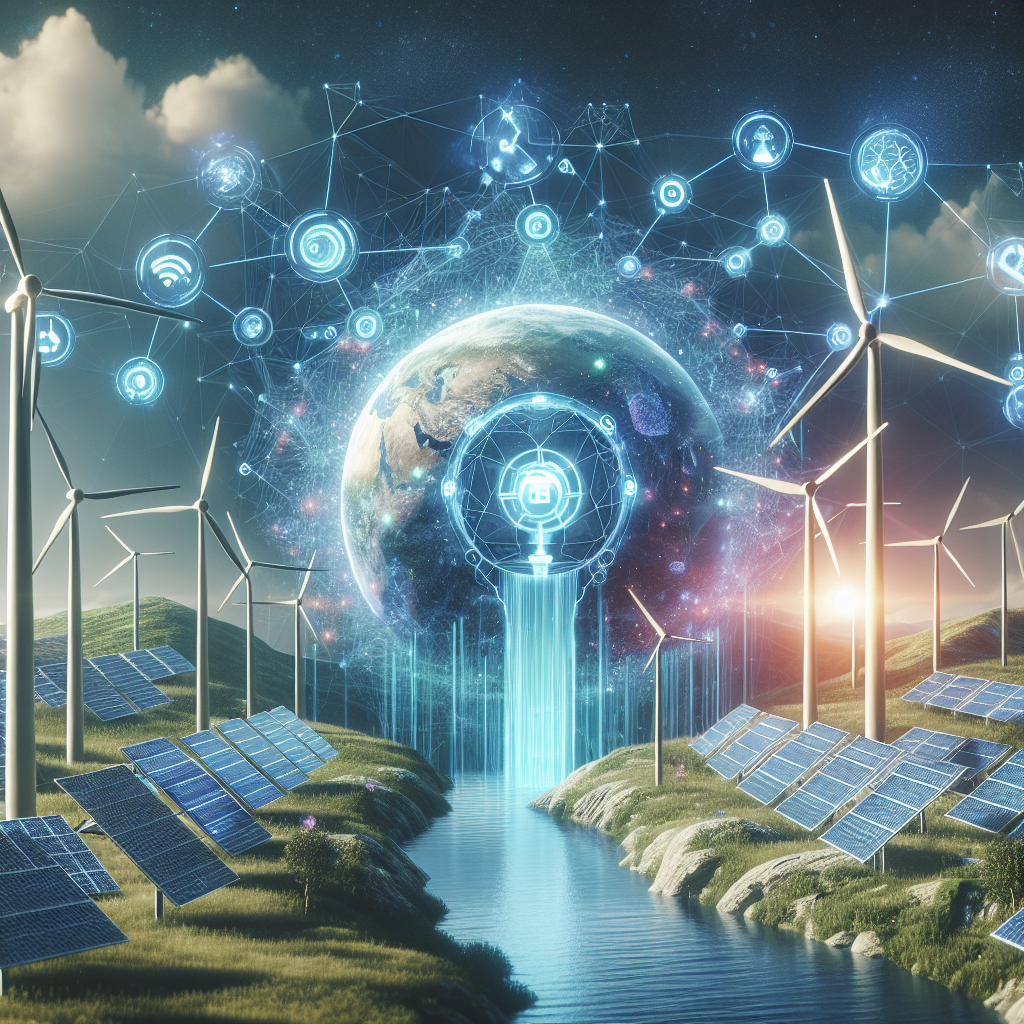The Future of AI in Forecasting Renewable Energy Output
Renewable energy sources such as solar and wind power are playing an increasingly important role in the global energy mix. As countries around the world look to reduce their carbon footprint and transition to a more sustainable energy system, the need for accurate forecasting of renewable energy output becomes crucial. This is where artificial intelligence (AI) comes in.
AI has the potential to revolutionize the way we forecast renewable energy output by leveraging data analytics, machine learning, and predictive modeling techniques. By analyzing vast amounts of historical and real-time data, AI algorithms can predict renewable energy generation with a high degree of accuracy, helping energy operators optimize their resources and improve grid stability.
In this article, we will explore the role of AI in forecasting renewable energy output, its benefits, challenges, and the future outlook for this technology.
Benefits of AI in Forecasting Renewable Energy Output
1. Improved Accuracy: AI algorithms can process large amounts of data from a variety of sources, including weather forecasts, historical energy production data, and sensor readings, to generate more accurate predictions of renewable energy output. This can help energy operators better plan for fluctuations in energy generation and optimize their resources accordingly.
2. Enhanced Efficiency: By providing more accurate forecasts, AI can help energy operators make better decisions in real-time, such as adjusting power production levels, scheduling maintenance activities, and optimizing grid operations. This can lead to increased efficiency and cost savings for energy companies.
3. Grid Stability: Renewable energy sources are inherently variable due to factors such as weather conditions and time of day. AI can help predict these fluctuations more accurately, allowing grid operators to better manage the integration of renewable energy into the grid and maintain stability in the power system.
4. Reduced Curtailment: Curtailment, or the waste of renewable energy due to oversupply or grid constraints, is a common challenge in the renewable energy industry. AI can help reduce curtailment by providing more accurate forecasts of energy generation, allowing operators to better match supply and demand in real-time.
Challenges of AI in Forecasting Renewable Energy Output
While AI holds great promise for improving the forecasting of renewable energy output, there are several challenges that need to be addressed for its widespread adoption:
1. Data Quality: The accuracy of AI algorithms depends on the quality of the data used for training and validation. Inaccurate or incomplete data can lead to biased predictions and reduce the effectiveness of AI models.
2. Model Interpretability: AI algorithms are often considered “black boxes” that make predictions without providing insights into how they arrived at a particular result. This lack of transparency can be a barrier to trust and acceptance of AI in the energy industry.
3. Scalability: As the volume of data generated by renewable energy sources continues to grow, AI algorithms need to be able to scale to process and analyze this data in real-time. Scalability can be a challenge for some AI models, especially those that require high computational power.
4. Regulatory and Policy Frameworks: The deployment of AI in the energy sector raises important questions about data privacy, security, and ethics. Regulatory and policy frameworks need to be developed to address these concerns and ensure that AI is used responsibly and ethically.
Future Outlook for AI in Forecasting Renewable Energy Output
Despite these challenges, the future looks bright for AI in forecasting renewable energy output. Advances in AI technology, such as deep learning and neural networks, are enabling more sophisticated and accurate predictions of energy generation. As AI algorithms continue to improve in accuracy and efficiency, we can expect to see greater adoption of AI in the energy industry.
In addition, the growing availability of data from smart meters, sensors, and IoT devices is providing energy operators with a wealth of information to feed into AI models. By harnessing this data and leveraging AI technology, energy companies can gain valuable insights into energy generation patterns, optimize their operations, and reduce costs.
Furthermore, collaborations between energy companies, AI developers, and research institutions are driving innovation in the field of renewable energy forecasting. By working together to develop and test new AI algorithms, these partnerships are helping to overcome technical challenges and accelerate the adoption of AI in the energy industry.
FAQs
Q: How accurate are AI predictions of renewable energy output?
A: AI predictions of renewable energy output can be highly accurate, depending on the quality of the data and the sophistication of the AI algorithms used. Studies have shown that AI models can outperform traditional forecasting methods in predicting energy generation from solar and wind sources.
Q: What are the key benefits of using AI for forecasting renewable energy output?
A: Some key benefits of using AI for forecasting renewable energy output include improved accuracy, enhanced efficiency, grid stability, and reduced curtailment. AI can help energy operators optimize their resources, make better decisions in real-time, and integrate renewable energy into the grid more effectively.
Q: What are the main challenges of using AI for forecasting renewable energy output?
A: Some key challenges of using AI for forecasting renewable energy output include data quality, model interpretability, scalability, and regulatory and policy frameworks. Addressing these challenges will be crucial for the widespread adoption of AI in the energy industry.
Q: What is the future outlook for AI in forecasting renewable energy output?
A: The future looks bright for AI in forecasting renewable energy output, with advances in AI technology, the availability of data, and collaborations driving innovation in the energy industry. As AI algorithms continue to improve in accuracy and efficiency, we can expect to see greater adoption of AI in forecasting renewable energy output.

